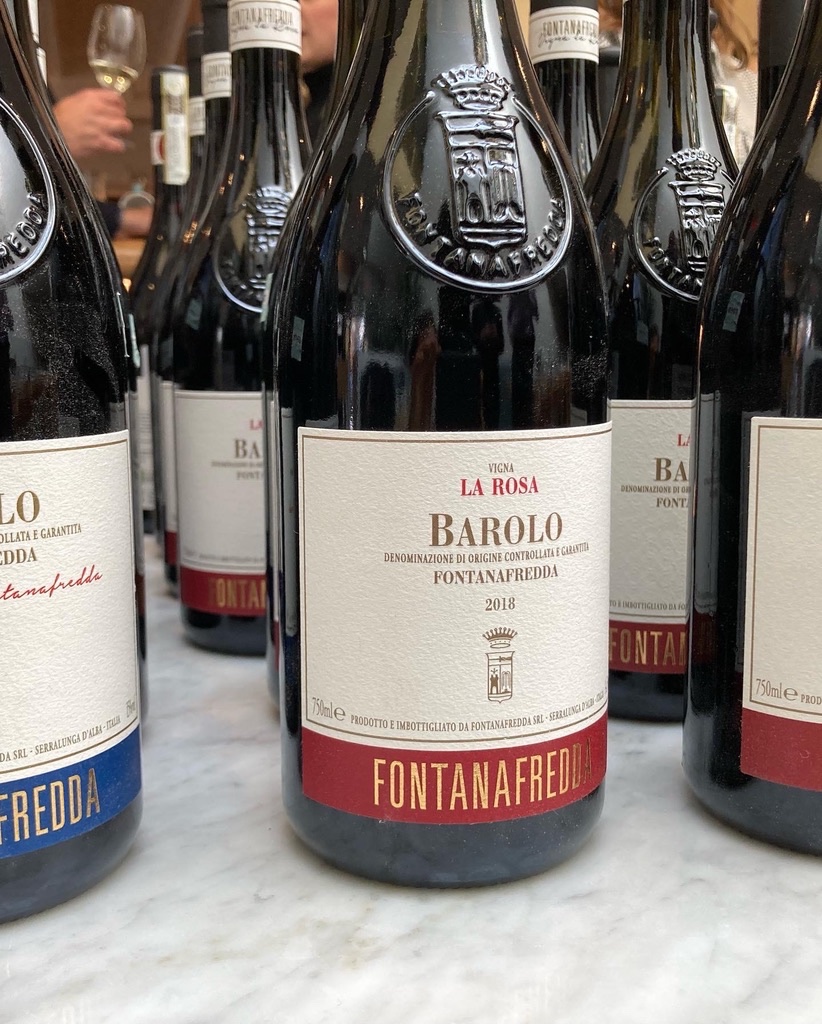
When two lovely Italian gentlemen invite you to a lunch and to drink wine, you say yes. Well, in real life you think harder about it, because who are these Italian gentlemen, you may ask? But when the offer comes through a PR department and includes a four-course lunch at Fiorellino Wine Bar with a Barolo pairing, you of course say yes. Even though you think you’re about 20 years too young and 20 years too poor to drink Barolo. Even though you think Barolo is a special occasion drink, not a lunch accompaniment. But this is Montreal, which does believe in a glass of wine at lunch. And it turns out that Barolo is restyling itself a little differently these days, hence the Instagram hashtag #Baroloweeks. It’s not stuffy anymore, and it’s not just a luxury Italian red that pairs well with corporate credit cards, or so we were told.
The three B’s: Barbaresco, Brunello and Barolo
These are the big players in elegant Italian reds. They used to be the type of bottles I needed to buy young and age for years if I wanted to be able to afford them. Which means I didn’t buy them. But this lunch showed me that even I can afford the occasional glass of tannic elegance. It also showed me that they pair well with lighter fare, and that 2018 was exceptional in the DOCG geographic area of Italy that’s home to Fontanafredda, which sponsored the lunch as part of its round-the-world re-branding push for Barolo. They’re trying to get more Barolo sold by the glass and promote it as something you can drink anytime with anything, not just pasta or red meat, because not enough restaurants put it on the by-the-glass menu. But Nebbiolo, the grape beyond Barolo, is versatile.
Fun facts:
Fontanafredda’s Barolo DOCG del Comune di Serralunga d’Alba 2018 made Wine Spectator’s Top 100 Wines of 2022 list. And the winery itself was founded by the first King of Italy in 1858. Back then, the wine likely wasn’t as good as it is now. And certainly not as consistently good.
Fontanafredda is a Barolo village within the controlled geographic area of Barolo. If you grow Nebbiolo grapes outside of that area, it’s not Barolo, like sparkling wine made outside of the Champagne region of France can’t be called Champagne.) We tasted some of that particular Barolo village’s 100% Nebbiolo wines ranging from $40 at the SAQ to over $100. Can you taste the difference as you move up in price? Generally, yes, but you can still appreciate the leather and cherry from the oak and ageing in the least expensive younger ones, and you can also taste the difference between parcels of land in different years of the elegant La Rosa line. So buying a less expensive one (or three) and waiting a year (for one or two of them) is a great option.
Organically farmed since 2016 and certified since 2018, some of that higher price tag is because of Fontanafredda’s sustainability certification, which is something more large winemakers are doing, but not all. If you’ve never had Barolo, the modern trend is away from oaky, big, high-alcohol bottles. Alberto and Roberto from Fontanafredda explained that nowadays the differences are more about terroir speaking for itself, which is the general trend in all kinds of wine and spirits.
The result is more food-friendly wine: There’s freshness and red fruit with just enough tannins in the Serralunga and more leather and liquorice in the 2018 blue label that went with the balsamic on my bitter endive, radicchio and carrot salad.
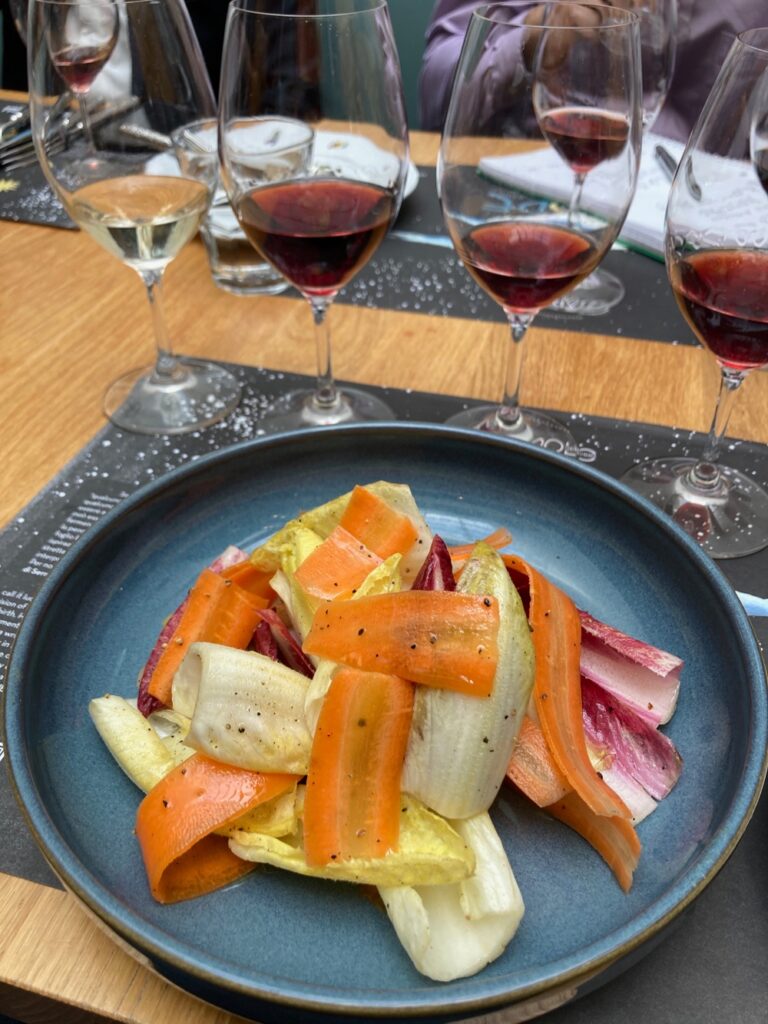
My first round favorite was the 2018 La Rosa that boomed with black pepper.
The 1996 La Rosa didn’t have the same brightness and fruit, but a softness and almost creamy note that opened up into a great pairing for seared duck breast with Jerusalem artichoke purée, cherry or balsamic duck jus, Jerusalem artichoke chips, grilled delicate squash slice and cooked greens.
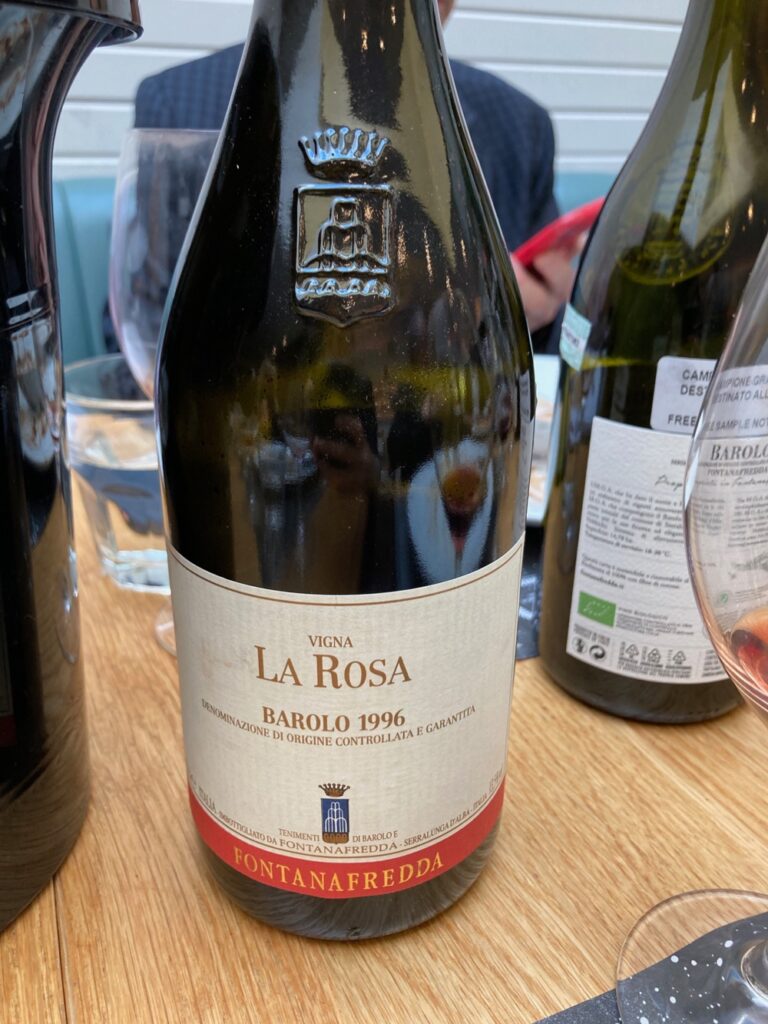
My favourite was the 2010 Riserva – the goldilocks of Barolo. “The vintage of the century,” said Roberto before dashing off to catch a flight. Riserva means aged two extra years in bottle before release. This bottle isn’t even listed on the Fontanafredda website, so I guess we’ll all be waiting another 78 years or so for the chance for another.
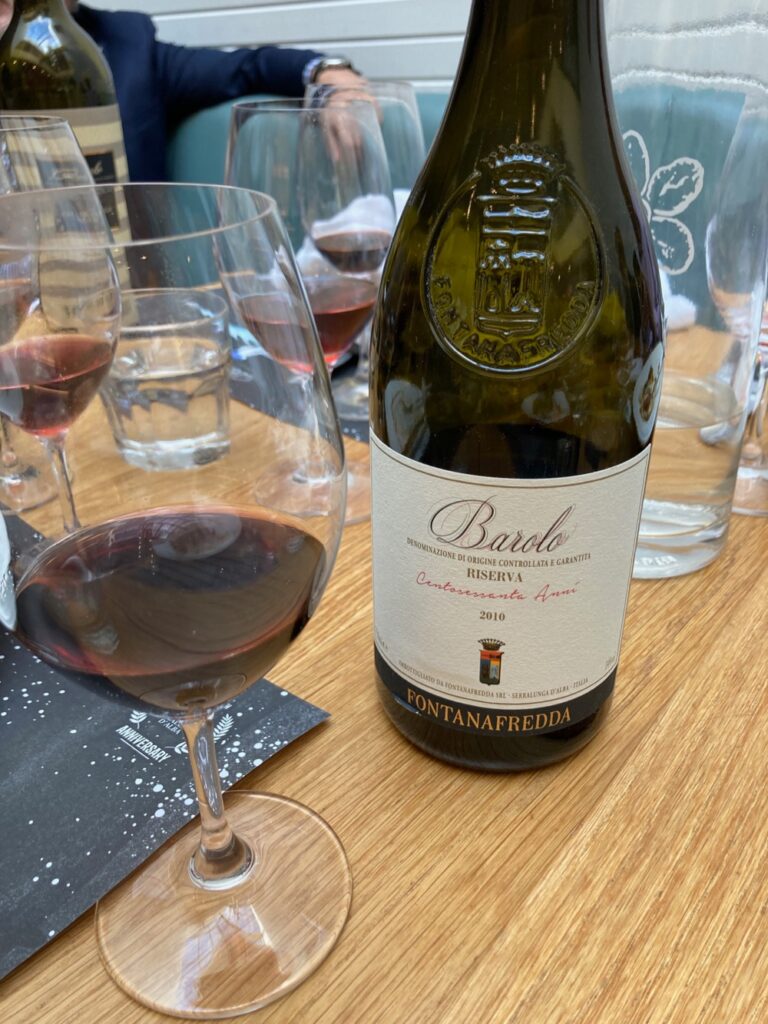
So is Barolo really not stuffy anymore?
Are we actually going to see it sold more often by the glass? Is it affordable enough to drink on a regular basis? I think the first two are likely, depending on the bottle – at $185 at the SAQ, I won’t be seeing the Riserva by the glass anytime soon. But at $34, you could see the 2018 Barolo, which is still fine drinking, just without the elegance of the older bottles. But whether it’s affordable enough to drink regularly is relative. And the fun is in comparing the ageing, so I might prefer to splurge on a slightly more expensive bottle to drink with a less expensive one.
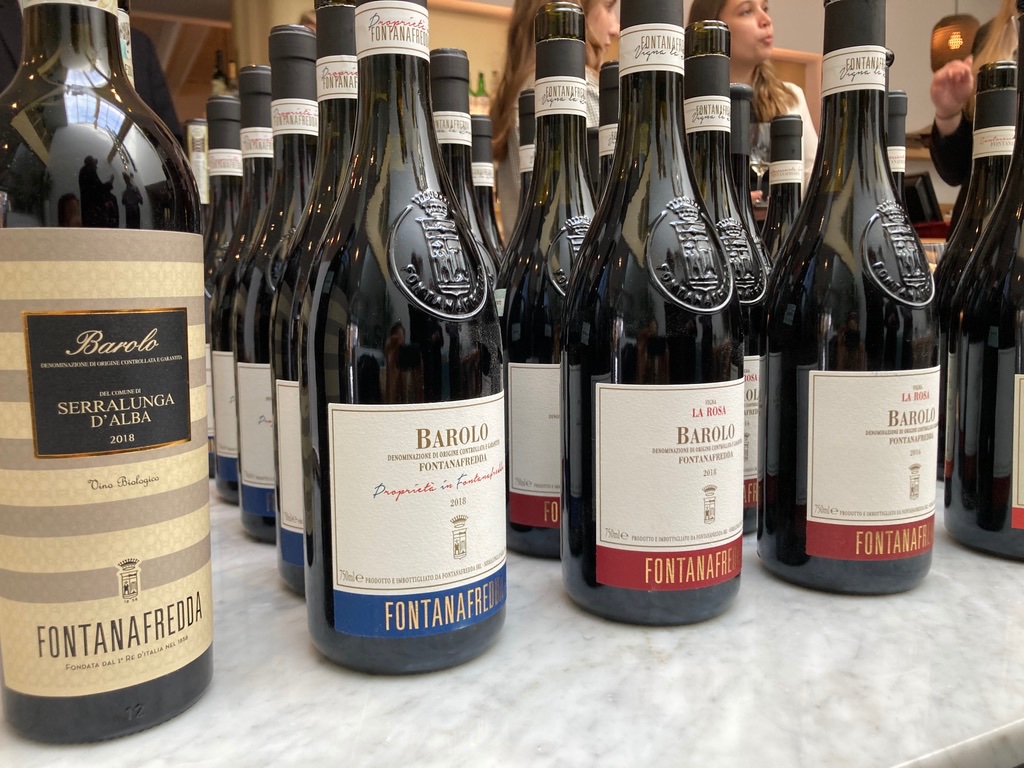
Still, I have a lot of respect for Fontanafredda’s rebranding. Sending two charming Italian gentlemen around the world to teach the rest of us about Italian terroir is much better than lowering the price to sell more. It’s a quality product that I’d certainly like to drink at lunch or dinner if I see it on a menu.
But the fact is that I still can’t really afford to buy a bunch of differently Barolo to compare, which is why I’m only mentioning Fontanafredda here when there are lots of other exceptional Barolo, I’m sure. So my hope is maybe Fontanafredda’s mission will have a trickle down effect for all Barolo, and we’ll start seeing more organic and biodynamic Barolo options on wine bar by-the-glass menus. A 2023 trend?
Leave a Reply